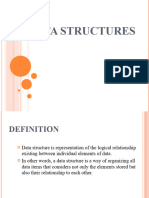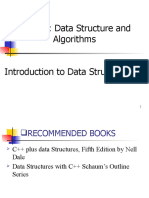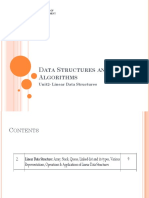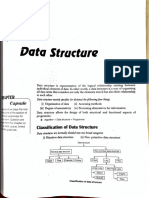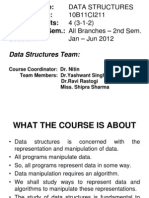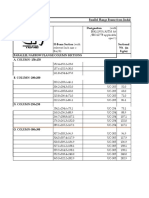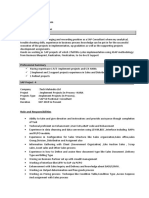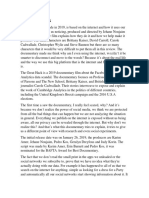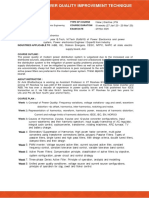0% found this document useful (0 votes)
80 views39 pagesIntroduction To Data Structures
The document provides an introduction to data structures. It defines data structures as a way of collecting and organizing data so that operations can be performed efficiently. Data structures can be primitive (built-in types) or non-primitive (custom structures like lists, stacks, queues). Non-primitive data structures are further classified as linear (arrays, linked lists) or non-linear (trees, graphs). Common operations on data structures like insertion, deletion and traversal are also discussed. Specific data structures like stacks, queues and linked lists are explained in terms of their characteristics and implementations.
Uploaded by
focaba4283Copyright
© © All Rights Reserved
We take content rights seriously. If you suspect this is your content, claim it here.
Available Formats
Download as PDF, TXT or read online on Scribd
0% found this document useful (0 votes)
80 views39 pagesIntroduction To Data Structures
The document provides an introduction to data structures. It defines data structures as a way of collecting and organizing data so that operations can be performed efficiently. Data structures can be primitive (built-in types) or non-primitive (custom structures like lists, stacks, queues). Non-primitive data structures are further classified as linear (arrays, linked lists) or non-linear (trees, graphs). Common operations on data structures like insertion, deletion and traversal are also discussed. Specific data structures like stacks, queues and linked lists are explained in terms of their characteristics and implementations.
Uploaded by
focaba4283Copyright
© © All Rights Reserved
We take content rights seriously. If you suspect this is your content, claim it here.
Available Formats
Download as PDF, TXT or read online on Scribd
/ 39









